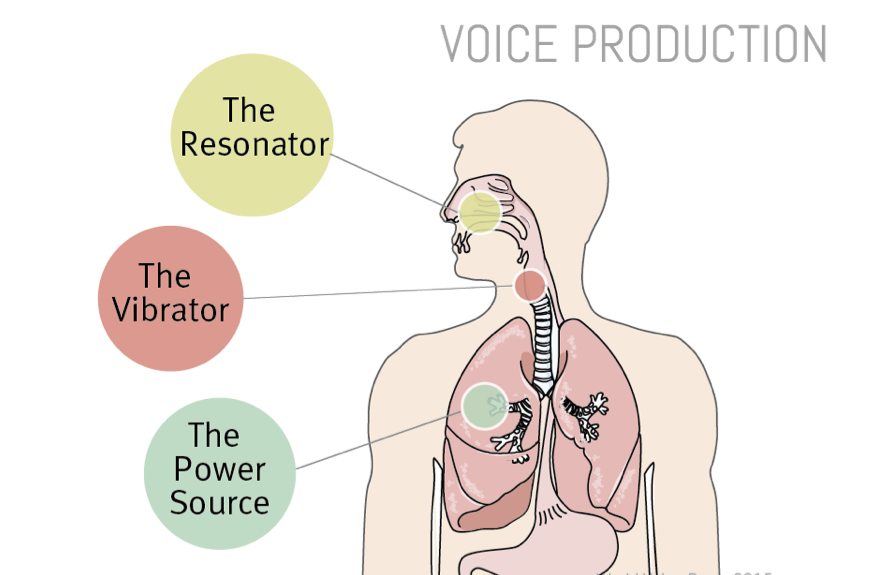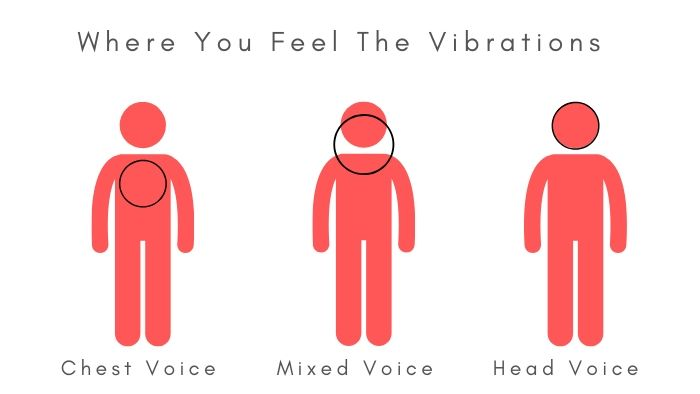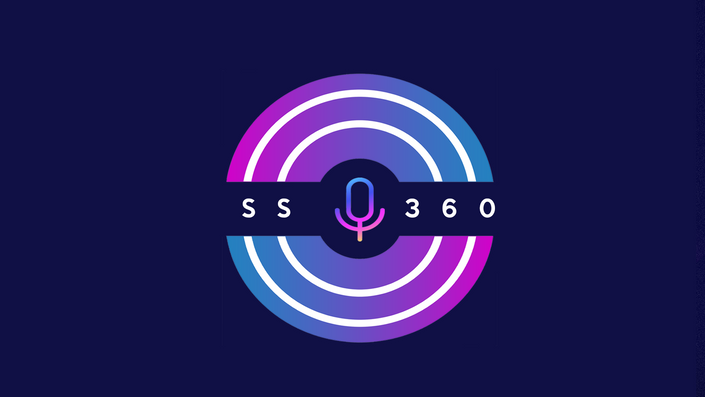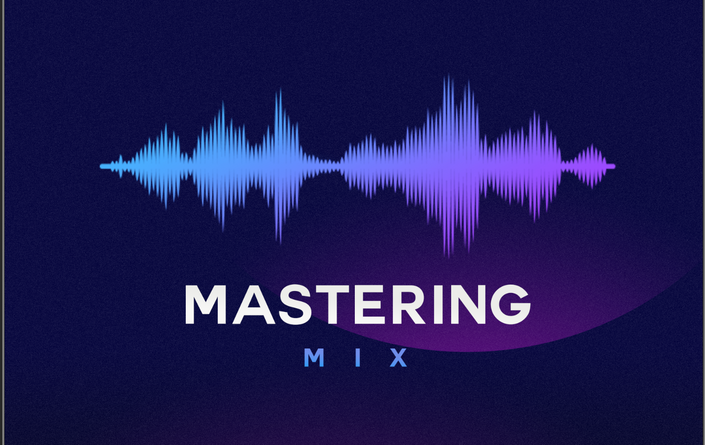If singing doesn’t come naturally to you, it might feel pretty discouraging. I know I’ve had my fair share of frustration learning how to navigate those high notes over the years, but what if I told you it’s a lot easier to achieve than you think? Even someone with great success like Ed Sheeran had his struggles. Take a listen to this clip from his interview with Johnathan Ross. I think you’ll be surprised. Watch it here.

Didn’t see that coming did you? I love what basketball coach, Tim Notke wisely said, “Hard work beats talent, when talent doesn’t work hard.” So even if you feel like you can’t sing naturally, don’t give up. Where there’s a will, there’s a way. Even someone who appears tone deaf can work hard and learn how to overcome it. So, let’s take a deep breath together and start singing with confidence as I’ll be sharing some of my best tips to help you sing better!
1. Get Out of Your Head

So much of our singing is psychological. Ever wonder why you can sing that high note alone in your room but the minute you go to do that in front of someone your entire throat closes up. Yeah… its not your vocal cords saying you can’t do it, its your brain. Nervousness, self-doubt, fear of failure, or critical thoughts will find their way in and take away from your potential if you let it.
There’s a book I read recently by Berry Green and Tim Gallaway entitled, The Inner Game of Music. They said, “Your Performance = Your Potential – the Interference.” Meaning, your vocal performance is equal to whatever you are capable of when you remove the obstacles or interferences that arise. I understand that stumbling over the lyrics or having your voice crack is embarrassing, but you’ve got to learn how to ignore these thoughts as they’ll only end up causing your muscles to tense up from the stress.
If you want to learn how to sing better, begin by eliminating any uncertainties you have about our own voice, its significance, and allow yourself to take that first step needed in discovering your own unique sound. Don’t get stuck in your head when you make a mistake. Building the voice takes time, dedication, consistency, and perseverance, just like anything in life. In order to be great at something we have to allow ourselves to take the risks needed and sometimes we fall as a result of taking that risk. Nobody’s perfect, and nobody starts perfect. There’s always a vocal journey singers experience.
2. Understand How Your Voice Functions

A lot times, just having a deeper understanding of how the singing process works can help you learn how to sing better. So let’s dive in!
You can think of your singing voice like a woodwind instrument. To make sound, it needs three parts: a respirator (breath provider), a vibrator, and a resonator. Our lungs act as the respirator, supplying air that flows through the vocal cords to start and maintain vibration. The vocal cords, also called vocal folds, act as the vibrator. They’re two bands of muscular tissue in your voice box at the top of your windpipe. Normally, they stay open so we can breathe, but when we speak or sing, air from our lungs pushes through them, causing them to vibrate.
When the vocal cords vibrate, they create a sound that’s then amplified in the spaces above them: the roof of the mouth, pharynx (the back of the throat), and the head or nasal cavities. These spaces shape the sound’s quality, along with our tongue, teeth, lips, and soft palate, helping us form the words we sing.
Now that you know how it functions let go over our two main vocal registers, chest voice and head voice.

Chest Voice
Chest voice is your speaking voice register that resonates inside your mouth and against the chest cavity. Try saying, “Hey,” like a tough guy with your hand placed on your chest. You should be able to feel the sympathetic vibrations against your hand. This register, engages the full length and thickness of the vocal folds, closing them deeper than the lighter parts of our voice. Using this register will create a depth, richness, and fullness to your vocal tone while singing.
Head Voice
Head voice is the upper register of our singing range. When we sing in head voice, we can feel the vibrations in our head and nasal cavity. It might seem like the sound is coming from the top of our head or behind our eyes, which is why it’s called, “head voice.” To find it, try saying, “wee,” like a child going down a slide, aiming for those high notes.
In head voice, our vocal cords stretch out and become thinner, making it easier for those higher pitches to be produced. This thinning out of the vocal folds, gives the sound a lighter, flute-like quality, compared to the deeper, fuller sound of chest voice, because essentially there’s less muscle fiber vibrating. In head voice, your vocal tone will have a gentle, sweet sound about it.
Mixed Voice
Most singers will know how important it is to develop their chest and head voices, but to truly impress your audience with your best voice, you need to blend these two registers smoothly using a technique called mixed voice. Mix voice is the blending of these two registers, the chest and head voice through pharyngeal resonance.
Pharyngeal resonance is that whiny, nasally, crybaby sound that you’ll find really obnoxious. This sound is mixed with your chest and head registers to create a split of resonance allowing your voice to connect from the bottom to the top seamlessly. This technique helps to eliminate the vocal break and give your high notes more power without straining. Vocal exercises using “NAY” and the “NG” sound can boost pharyngeal resonance and help you discover this.
3. Know your Limits and Growth Potential
Before you’re able to grow your voice and practice singing, it’s essential to understand your voice type and current range. Every voice is unique, and knowing this information will help you choose appropriate songs while also giving you an idea as to where to begin in your training. Making sure you choose the right songs that fit your current ability will help your voice sound better to your audience.

How to Identify Your Vocal Range
Determine your vocal range by humming on a comfortable pitch and gradually singing lower until you can no longer produce a clear, comfortable sound. Use a keyboard, piano, or digital app to match pitch and notate the lowest note you can hum without straining. If your chest voice feels strained, it might feel like you’re swallowing the note, as a result of your larynx dropping too low, so be sure to only extend as far as you can comfortably.
For your highest note, you’ll repeat this process but extend upwards, gradually, note by note, until you can no longer produce a clear, comfortable sound. Match pitch to a keyboard, piano, or digital app and notate the highest note you can hum without straining. If your head voice feels strained, it will be tight and feel like you’re hitting a ceiling. Always aim to stay relaxed and don’t push to achieve what you desire.
If you’d like a more accurate assessment be sure to reach out to a vocal coach, whether virtually or in person, as they’ll be able to hear you sing and give you tips on how to shift your resonance to achieve a broader vocal range.
4. Stay Relaxed

If it feels as though your face is contorting in every which way possible just to squeeze out that high note…STOP!
Many singers make the common mistake of tensing up their neck or facial muscles in order to sing higher. This is unnecessary and can actually inhibit your ability to sing effectively. The larynx (voice box) contains intrinsic vocal muscles that work together, much like your triceps and biceps, to shorten and lengthen the vocal cords, enabling them to produce various pitches. They don’t need your help in the process.
Next time you go to belt out your favorite tune, look in the mirror and see if you notice those external muscles getting involved. If so, that’s probably why those higher notes feel difficult and harder to achieve. Instead, place your index fingers on the corners of your mouth like football goals posts and only give yourself that amount of space to sing. You must keep it narrow with your mouth while singing those high notes or else you will strain and shout.
As Brett Manning likes to say, “Find it stoically, shape it emotionally.” Which means, if someone in your audience was deaf, ideally they shouldn’t be able to tell whether you’re singing the high notes or the low notes, everything should stay relaxed and in a downward posture. You should only be shaping the notes emotionally as you try to create a compelling performance for your listeners.
Be sure to contact your local voice teacher, or seek help through online singing lessons, if you’re unable to get rid of this excess tension. A great vocal coach can watch and assist you in learning how to sing properly and disengage those outer muscles.
5. Train Your Voice Like Your Body
While your vocal cords are not entirely muscle, they still need exercises to learn how to stay coordinated as you transition through registers and vibrate at multiple frequencies. Take the vocal flip for example, ever wonder why your voice breaks at a certain point while singing? It doesn’t mean you’re a bad singer. It’s essentially just letting go into a head voice coordination as it’s, and your bodies way, of telling you there’s too much pressure on your vocal cords. You must learn how to thin out your cords and keep them connected through the shifting of your resonance.
You can use exercises like lip trills, vocal fry, and Nay, Nay, Nay, to help you thin out and maintain that light coordination.
Lip Trills: Relax your lips and blow air through them to create a buzzing sound, much like a motorboat. Be sure to create more of a “B” sound when doing this than a “P” sound so that you’ll get the right amount of compression. This SOVT (Semi Occulted Vocal Tract) exercise will create back pressure to help keep your cords sealed up and relaxed while transitioning through your registers.
Nay, Nay, Nay: In a bratty, witch-like tone, sing nay, nay, nay on a 5 tone scale. This engages pharyngeal resonance, that nasal tone quality, which will help assist your cords in thinning out without the feeling of pulling up. Don’t be afraid of sounding nasally or a bit weird. The more emphasis on nasality you can have on this exercise the better.
Vocal Fry: Begin by producing a low, creaky door sound (vocal fry) and gradually slide into a lighter head voice. This is engaging the inside edges of the vocal folds in order that they drop the weight when singing higher, maintaining that slow gentle vibration, reducing tension and creating a smooth transition.

Through our online programs, like Singing Success 360 or Mastering Mix, you’ll be able to have an abundance of exercises at your fingertips that will allow you to systematically train your voice and learn how to sing better. Just like our bodies, if we want to have more endurance, longevity, and increase in muscle we have to endure daily cardio and strength training. Your voice is no different. These vocal programs will teach you to increase your power, add an octave to your vocal range, erase your break, and train your ear. Ultimately, your voice will learn how to coordinate in every way possible. Brett will also give you incredible information on how you can incorporate and find your own unique vocal style. Take a look at them here.

6. Warm Up Before you Sing
Your songs are not your warm-up! I cannot preach this enough! Imagine NBA players stepping onto the court without first dribbling a ball, loosening their muscles, taking a few shots, stretching—preparing their bodies for rapid movement. It’s unthinkable, right? Then why do we, as singers, often neglect this crucial step? If you want to learn how to sing better, prioritizing warm-ups is non-negotiable for longevity. I always recommend my clients take their voice through exercises that touch on each of their different vocal registers, much like you’ll find in our programs Singing Success 360 and Mastering Mix. Doing this will allow their voice to coordinate and blend into a well balanced mix voice prior to their performance. Making sure you sound good is essential and you can’t do that neglecting this crucial step.
7. Master Your Medium
Many times singers simply start out their vocal performance too big and then they have no where to go dynamically. You can’t start out giving 100 percent and maintain that consistency throughout your song. Eventually, everything will start to feel and sound like pushing. You’ll find yourself fatigued and wonder why your tone is suffering and off pitch. Some will even find themselves needing to go on vocal rest. In order to sing better, you must recognize and be aware of what your medium level of singing is, your mezzo forte, that way you can either choose to back off or lean into in it in order to create a more compelling performance.
8. Sing With Emotion
A professional singer knows the importance of creating a compelling performance. We want to make sure the songs we’re singing speak to the listener on a personal level, resonating with their own experiences, emotions, and sensibilities. Before you go to sing, take a few moments to dive deep into the lyrics of the song. Make sure you understand what the author wants to convey and tap into the emotion it requires to deliver that. Doing this will allow your audience to connect with the story you’re telling, making your performance unforgettable!
9. Seek Professional Guidance
If you’re having trouble learning how to sing better, don’t be afraid to reach out to us here at Singing Success. You don’t have to have a great voice to start. We work with beginner singers all the time as one of our primary goals is to help you discover your full potential in a welcoming space. Whether you feel it’s more ear training you need, vocal control, tips for maintaining vocal health, or eliminating strain, we want you to feel as though you’re equipped for success!
Book a Skype or In-Person lesson with Monica Sadler today!
First time client? Call 615.866.1099 or email us at support@singingsuccess.com to inquire about a Discovery lesson with Monica Sadler.






